Tiny cats look adorable, small, and fluffy!
Wondering, why is my cat so small? What’s wrong with my cat? Why she’s not growing like other felines? Right?
Looking for a correct explanation?
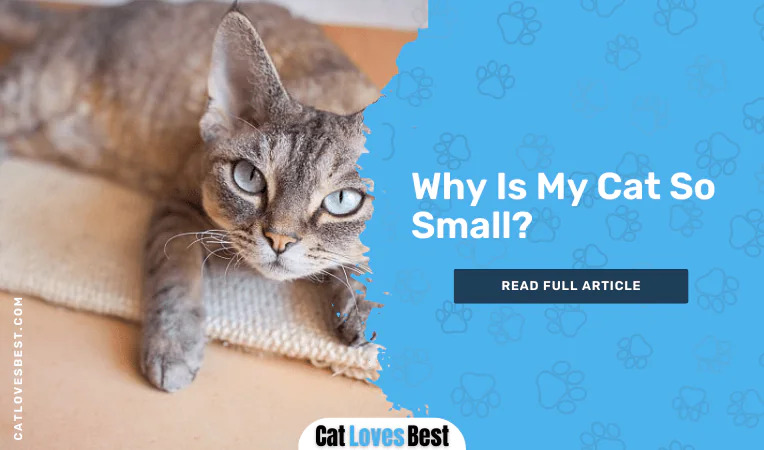
Well, let us allow you to help you out, we have done some good research work regarding the possible reasons behind your kitty’s small height.
Let’s not waste time, dig in to explore the reasons, and some common questions are also included for a better understanding.
When Do Cats Stop Growing?
If we talk from a facts point of view, it has been stated that felines’ growth is much faster, like kitten reaches their adulthood at the age of 10-12 months. Plus, they reach adulthood body size at the week of 40, and gradually their growth stop after entering 80% of their adulthood.
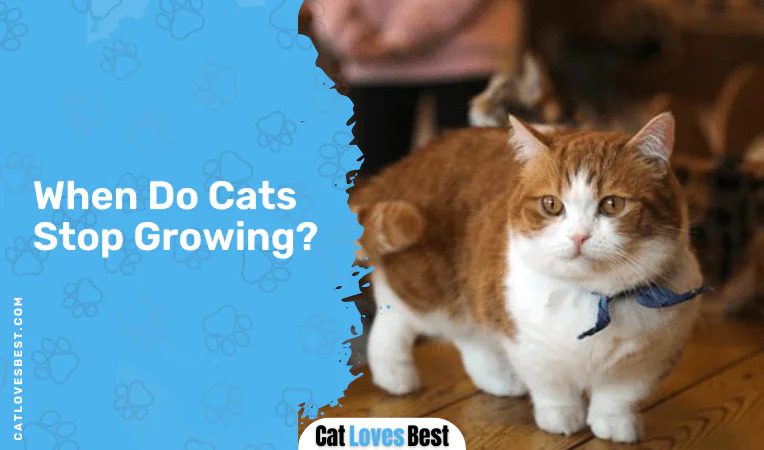
So, if your feline pal is still under age then no need to worry, you can start her proper diet and make sure all the required nutrients are consumed by her for health and speedy growth of the body.
However, if she has already reached her adulthood age then you cannot do much and you have to deal with her small height.
7 Logical Reasons Behind My Kitty’s Small Height!
There can be many reasons behind your kitty’s tiny appearance.
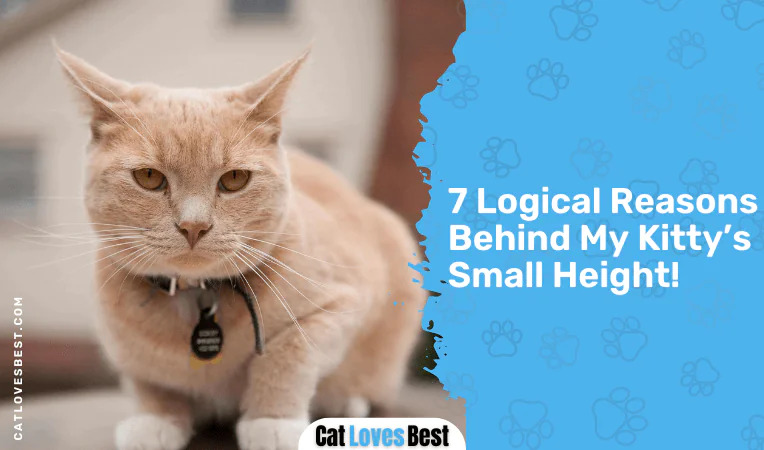
We have jotted down seven possible reasons, let’s solve this mystery by carefully going through all the reasons.
1. The Runt of the Litter
If your kitty has siblings then she might be the runt of the litter. Let me explain it to you in a simpler way, the runt is the one who is smaller and weak than the other members of the group. So, this could be one of the possible reasons behind your kitty’s small height.
But, that doesn’t mean she cannot grow, make sure she is having the same meal as her other siblings, and following the same nutrients chart. If you encounter any illness signs then immediately consult the vet for medication.
2. Poor Nutrition
Your feline pal might be small because she is not having proper meals, and not intaking nutrients that one should intake for proper development of the body. It has been said that cats should take a proper meal enriched with essential nutrients, twice a day with a 6-8 hours gap.
Like, if you are parenting a kitten then it solely becomes your responsibility that once she stops consuming mother’s milk, it’s your duty to feed her the correct meal with appropriate nutrients for the development of her body.
If you are parenting an adult cat, then make sure she is getting meals, which are enriched with nutrients as per her body requirement and fed less treats. Sometimes, the brand you are feeding her also affects body development.
It is advisable to seek the vet’s advice, and follow their diet chart to help your kitty get all the essential nutrients like animal-based protein, carbohydrates, fats, vitamins, and minerals in the correct ratio for better development of the body.
3. Intestinal Parasites
Another possible reason behind your feline pal’s small height could be due to intestinal parasites.
Yes, you heard it right, there are worms such as roundworms, tapeworms, and hookworms, which can affect your kitty’s body development.
These worms will prevent your kitty from getting essential nutrients from their everyday meal and ends up resulting in symptoms like vomiting, diarrhea, bloated tummy, stomachache, weight loss, and many more related issues.
It’s very important to get rid of these parasites by consulting the vet and starting your kitty’s medication soonest to avoid health complications.
4. Liver Shunt
It has also been observed that during the time of pregnancy, the mother cat’s health is not monitored wisely and she has not been getting proper meals. Then it will lead to incomplete nourishment of the baby kitten, which results in improper development of body cells.
This gives birth to liver shunt health problems in the feline’s body, where blood cannot pass through the liver. It automatically prevents cells to function properly, and also leads to improper metabolism growth, which ends up affecting their body structure like short growth, or height.
5. Hyperthyroidism or Diabetes
One of the reasons behind your kitty’s small height can be that she might be suffering from underlying health issues, such as hyperthyroidism or diabetes.
Let me explain it to you in a better way with an example.
If your kitty is eating normally, and still demands more food, but goes underweight. And other symptoms like feeling more thirsty, urinating here and there, and other related issues, it’s a high possibility that she might be suffering from a diabetic health issue.
Similarly, in the case of hyperthyroidism same symptoms occurs with vomiting and diarrhea. Due to a hormonal disorder, such health issues develop in their body.
In such cases, let the vet do their work, diagnose the issue and prescribe the medicine as per the health status. In a diabetic case, the vet might need to give insulin to your kitty for proper development of her body cells.
6. Depend Upon the Breed
Well, your kitty’s breed can be one of the possible reasons behind her tiny appearances. As per zoology study, cats’ height differs from one breed to another and there are few breeds that have tiny physiques appearance by birth due to genetics.
Here, we have a list of a few smaller breeds such as:
- Munchkin
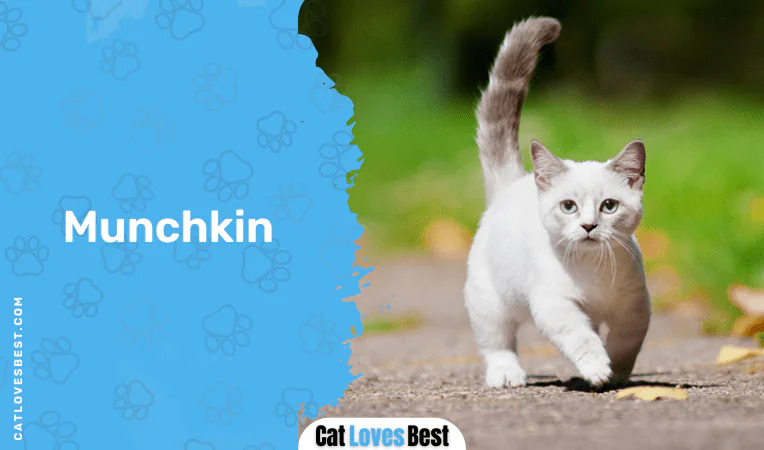
The Munchkin cats are considered to be an original breed of dwarf cats, they have short legs, and a tiny appearance because of genetic mutation. Basically, they give you a kitten-like personality.
- Siamese
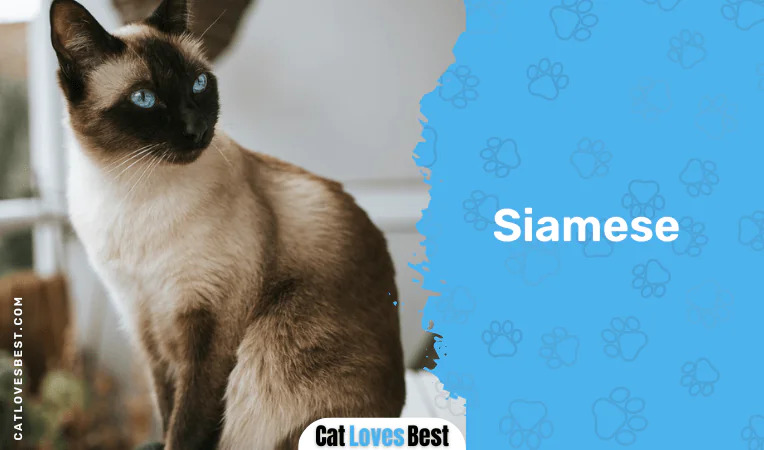
The Siamese is the oldest breed of Asian cats, they have skinny personalities and are athletic. They fall under one of the smaller breed categories with slim figures and fine coat appearances.
- Devon Rex
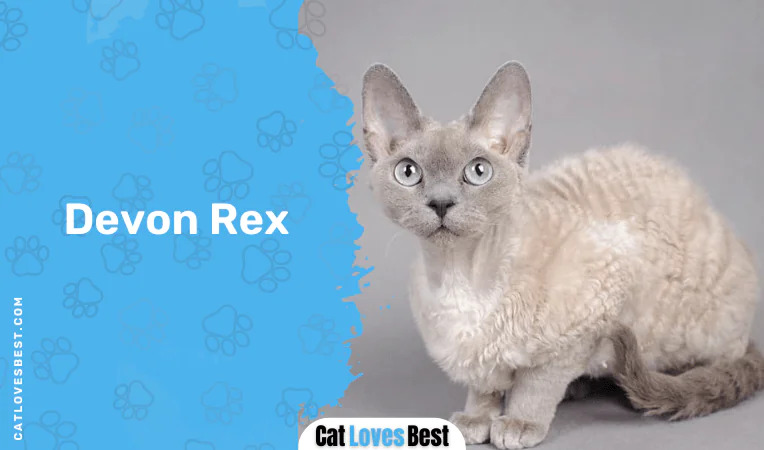
The Devon Rex is one of the smallest breeds with a high intelligence level, their body structure is a bit different, short height with long ears, and big eyes. A shiny soft coat adds a soothing touch to their appearance.
There are many other smaller breeds, that give kitten-like personalities even in their adulthood stage. So, yeah your kitty’s height depends on whether she falls under which breed category.
7. Due to Dwarfism
Dwarfism results in short height caused mainly by genetic issues in cats.
Furthermore, it’s not necessary that your kitty has dwarfism mainly due to genetic issues. It can also be caused due to deficiency in hormones, improper growth plate, or chromosomal abnormalities.
If your kitty has short legs, an unequal body structure, or any other issue as discussed in the above points, then she might have dwarfism.
However, as per the survey, it has been observed that dwarfism is found very rare in cat cases, and if she is having then you have to take extra care of her. As they tend to have a short life span and suffer many health issues.
Does the Gender of Cat Affect Their Size?
From a facts point of view, it has been observed that cats’ heights differ from one to another, and it’s not necessary that everyone will have the same growth. It has also been said that female cats are smaller than male cats, and height also varies according to breed.[1]
If your female feline pal is smaller than male cats, you don’t have to worry about it. But if she is of the same age, sex, and breed as compared to others. In such cases, the other possible reasons can be due to eating habits, health issues, genetic issues, and other more related ones.
What to Do if Your Cat Is Not Growing?
If you are observing that your kitty is not growing in height as she should then you need to find out the reasons. As we have discussed above the reasons behind your kitty being small. It is also the best thing to visit the vet to seek their advice for better judgment.
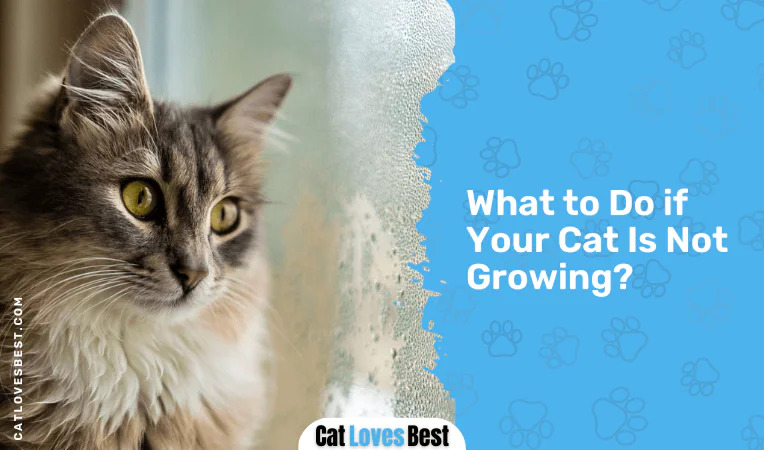
Like as you know it can be due to infections, and severe health issues also which have stopped your kitty’s growth, In such cases, your vet will diagnose her first and observe her completely before prescribing medicine. Once she is confirmed about the cause then they will start the medication according and soon you will be able to notice the changes in your kitty’s appearance.
On the other hand, if the problem is due to diet, or lack of nutrition, the vet will guide you on the ways to feed her healthy food and grab her attention towards the meal so that she doesn’t skip her meal.
Well, if the cause is detectable definitely your vet will help you out to overcome this height issue in your feline pal. However, in a few cases, there is no treatment in such a scenario it is advisable to deal with the situation gracefully and try to give a healthy lifestyle to your little feline pal.
FAQs
Is it normal for a cat to be small?
Well, yes if your cat belongs to a particular breed section whose structure is small, or has genetic issues then in such a scenario it is considered normal. But, due to other reasons her height is not growing like improper diet, lack of litter, or anything then it is not considered normal.
Can a cat be a dwarf?
Dwarfism in cats is caused by genetic issues, which causes to stop the growth of the feline, and other health issues are also encountered in her body. Such cats have uneven body structures and are associated with health issues.
Are small cats healthy?
A small cat is no less than an average cat if your kitty is eating correctly, participating in physical activities, and facing no severe health issues. Then you don’t have to worry and can simply enjoy yourself with your tinny companion. But, if she is not fulfilling any above criteria then it is advisable to look after her health and consult the vet for a better diet.
Well, It’s a Wrap!
It’s normal in being small in size for your cat. Don’t worry!
As discussed above cat sizes differ from one another on basis of many factors like age, gender, breed, etc. So, it’s completely fine if your kitty has a tiny appearance, all you need to do is monitored her health closely to avoid health complications.
And after reading our blog, now you have fruitful knowledge about the possible reasons behind your kitty’s short height. From those points also you can identify, whether your kitty is falling under any category.
One more thing, do consult your vet to clear your clouds of doubts regarding your kitty’s tiny look.
References:
- Lommer, M. J., & Verstraete, F. J. (2001). Radiographic patterns of periodontitis in cats: 147 cases (1998–1999). Journal of the American Veterinary Medical Association, 218(2), 230-234.

